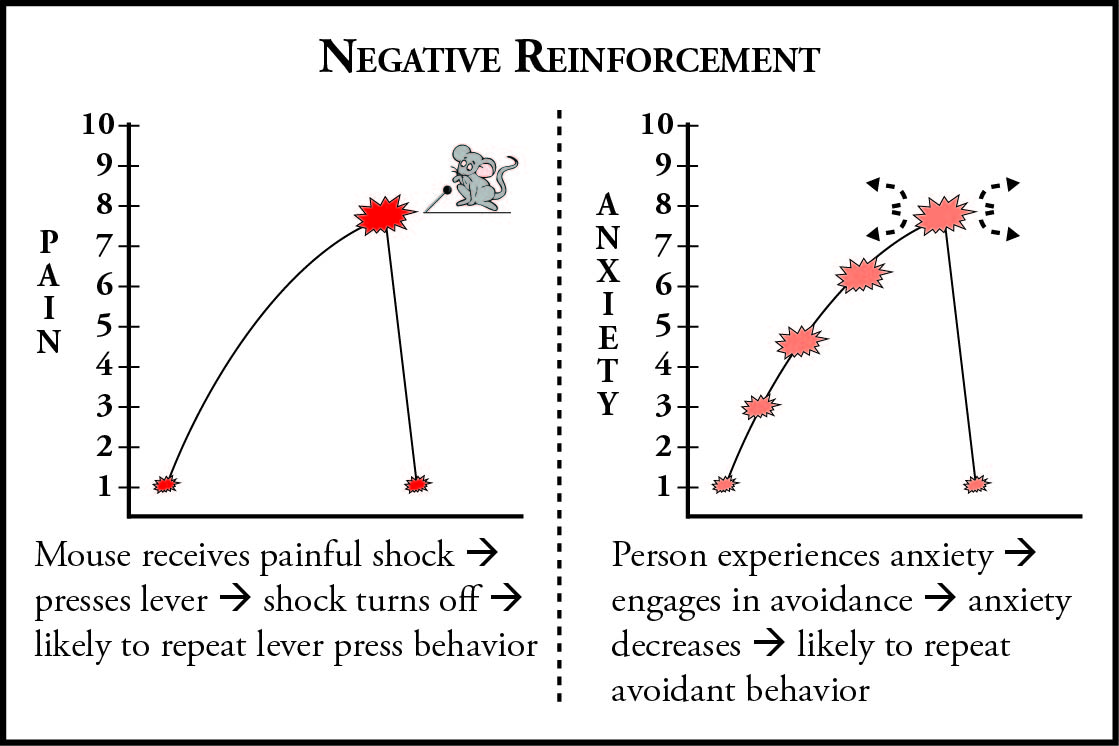Avoidance and Negative Reinforcement
To get a sense for reinforcement, picture a mouse in a box. On the inside of the box, there is a lever. If the mouse presses the lever, it is rewarded with a food pellet. After a while, it will press and press without hesitation to obtain its reward:
- press lever –> get food –> feel good (e.g., Yeah!) –> press lever again in future
This is an example of positive reinforcement, where behaviors that increase positive feelings tend to be repeated. But positive reinforcement does not play a substantial role in our relationship to anxiety. The main concern here is negative reinforcement.
Imagine the same mouse in the same box with the same lever. No food is involved this time, however. Now, there is an electrical grid on the floor of the box, which delivers a mild, continuous shock to the mouse’s poor little paws: buzzzzzzzz!
Luckily, there is a way to turn it off. When the lever is pressed, the shock instantly deactivates. A reasonably bright mouse will quickly learn to press that helpful lever:
- press lever –> get rid of shock –> feel better (phew!) –> press lever again in future
This is the powerful phenomenon of negative reinforcement, where behaviors that decrease negative feelings tend to be repeated. Think of an anxiety-provoking event in your life. For some, this might be a speech or a toast at a wedding. For others, it could be an overseas flight or an overdue breakup. As the event grew closer, our anxiety might steadily increase: perhaps reaching a 9 on a scale from 1 to 10.
But what if, on the morning of the event, we decide to bail? For most of us, this would be a major “Phew!” moment. Our anxiety might rapidly plummet from 9 to 3, which would be a great relief. As a result, we would be very likely to repeat the avoidant behavior. This is an example of negative reinforcement: feel anxious –> avoid –> anxiety goes down –> avoid more in the future.
People are not mice, of course. Yet the entire animal kingdom learns by reinforcement:
Dylan M. Kollman, PhD
dkollman@realanxietysolutions.com








what’s up, I love this blog, I just wanted to say it
Thanks very much, Zane.